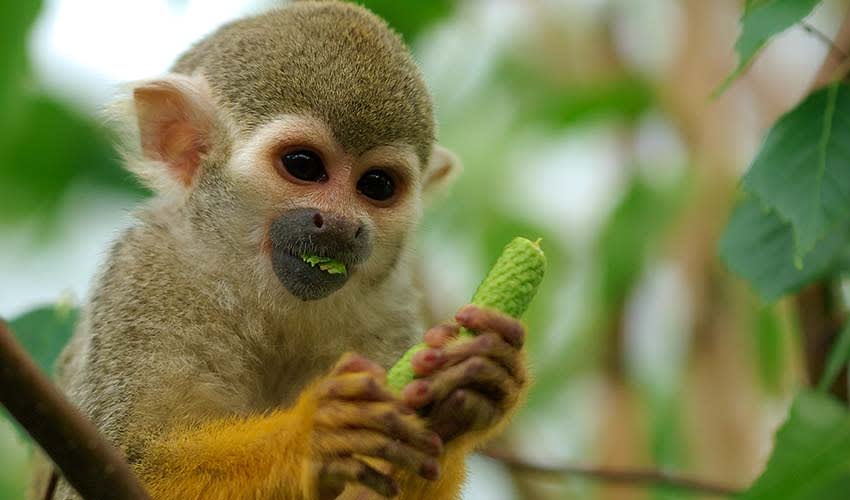Saimiri – Squirrel monkeys
Tiny dynamos of the rainforest
With their small size, agile movements, and curious personalities, they are often described as the “acrobats of the rainforest.” The genus Saimiri includes several species, all sharing a similar playful look: slender bodies, expressive faces marked with striking white “masks,” and long tails used for balance as they dart through the treetops. Their common name comes from their quick, darting movements and small, squirrel-like appearance.
Squirrel monkeys are among the smallest New World monkeys, with tails often longer than their bodies. Their coats are short and dense, usually olive or yellowish on the back with white facial markings and black muzzles that give them a slightly mischievous expression. Their tails, while not prehensile like some monkeys’, act as balancing poles that help them zip through branches at astonishing speeds.
What really makes squirrel monkeys fascinating is their social life. They live in some of the largest primate groups in the Americas, with troops sometimes numbering 50, 100, or even more individuals. These troops are lively, noisy, and constantly on the move, with individuals chattering, squeaking, and leaping in unison through the canopy. This group living not only provides protection against predators like hawks and snakes but also helps them forage more efficiently. Their diet is mostly made up of fruits, insects, and small animals, making them flexible omnivores that adapt well to changing forest conditions.
Squirrel monkeys are also known for their high intelligence. They have some of the largest brains relative to body size among primates, second only to humans, which makes them excellent problem-solvers and quick learners. In the wild, they use complex vocal calls and even urine-marking behaviors to communicate with troop members and navigate their dynamic social hierarchies. Because of their intelligence and adaptability, they were once widely used in biomedical research, though today this has raised ethical concerns.
Species in this genus
Black squirrel monkey
One of the most geographically restricted primates on Earth


